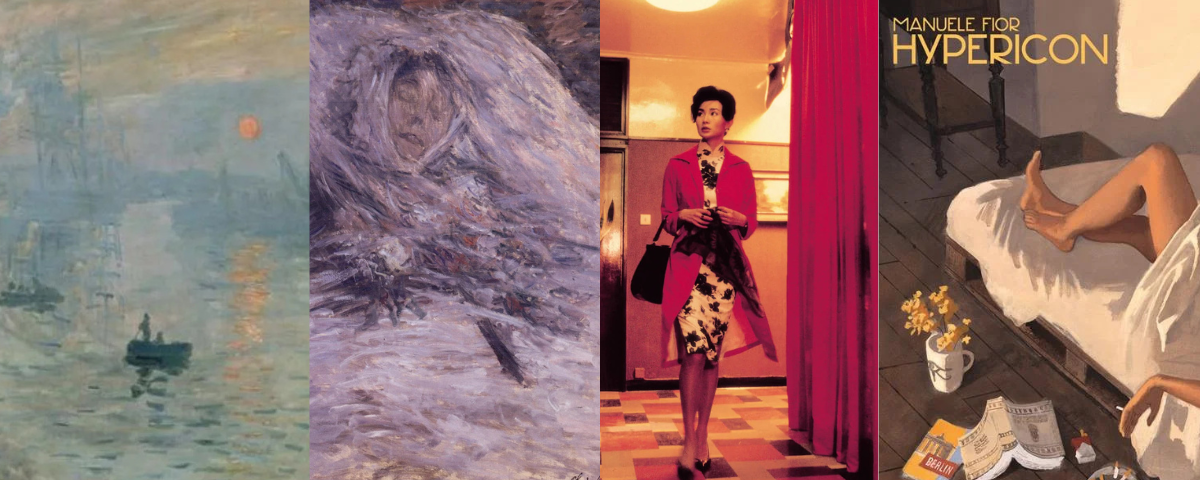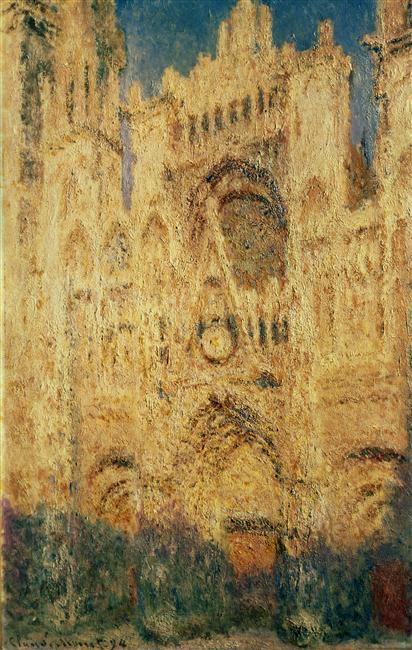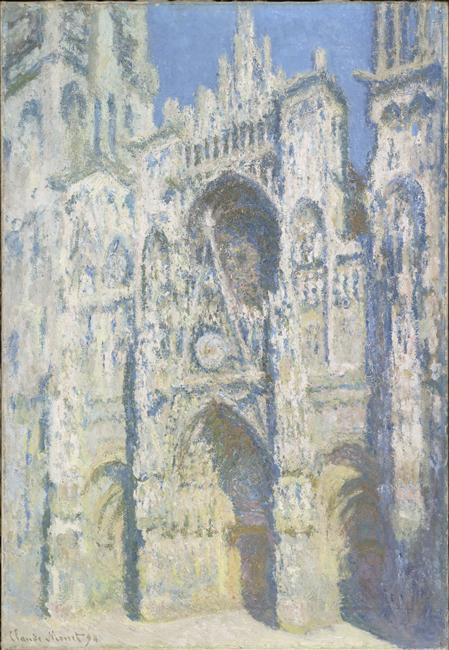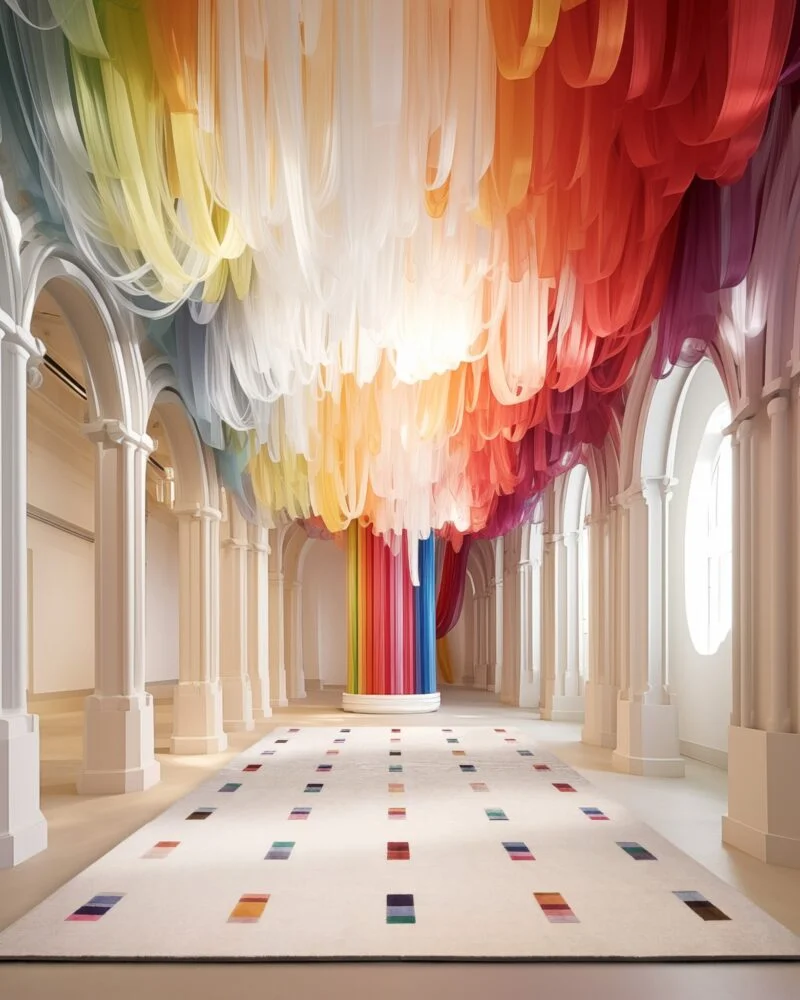
Impressionism turns 150 | A long-lasting revolution
Impressionism turns 150 | A long-lasting revolution
Curated by
It was on April 15th, 1874 that the photographer Felix Nadar made a presentation in his studio in Boulevard des Capucines in Paris, a group exhibition that would mark the beginning of an artistic revolution. Impressionism. A movement that not only revolutionized painting between the 19th and the 20th centuries, but which has also inspired a creative expansion in many other artistic areas.
Music, with Claude Debussy, adopted heavenly melodies that recreated the lightening and the fluidity of Impressionist canvases. In literature, authors such as Emile Zola or Virginia Woolf painted with words, capturing emotions and atmospheres with the same freedom that brush strokes could have. In cinema, directors like Jean Renoir created visual works that evoked the same feeling of capturing fleeting moments.
Although it was born in the 19th century, this artistic movement is also reflected in contemporary popular culture through artistic manifestations including cinema, fashion, comics, videogames and TV series.
Impressionism: its origins and main authors
Impressionism, a revolutionary artistic movement that emerged in France during the second half of the 19th century, stands out for its depiction of the effects of natural light through quick and uneven brush strokes, thus creating an impression rather than a faithful reproduction of reality. This style stood opposed to the academic norms of that time which emphasised an accurate and idealised representation of reality. Impressionists, on the other hand, tried to capture the ephemeral, the atmospheric changes and the nuances of natural light. This meant painting en plein air, that is outdoors, to capture the natural light in a direct and immediate way. Among the main Impressionist artists were Claude Monet, Edgar Degas, Pierre-Auguste Renoir, Camille Pissarro and Alfred Sisley, who all helped develop and spread this new artistic aesthetic that would so profoundly influence the modern art world.
The birth of the term Impressionism
The term Impressionism was coined following criticism of Monet for his painting Impression, soleil levant (Impression, Sunrise) in 1874, in which a critic called the painting “a mere impression.” This term was adopted by the artists themselves to describe their pictorial approach.
The Impressionist movement developed in opposition to the strict rules of the Salon de peinture et de sculpture, an official art exhibition in France organized by the Royal Academy of Painting and Sculpture. The Salon, which was the most important event in the French art world until the mid-19th century, favored the traditional academic style and rejected artistic innovations. This rigidity pushed artists to seek alternatives, such as the Salon des Refusés (Salon of the Rejected), which exhibited works rejected by the official Salon. These alternative movements challenged existing artistic norms and contributed to the growing dissatisfaction towards the Salon.
Despite its historic relevance, the Salon gradually lost its predominance due to the coming of indipendent exhibitions and the modernists movement of the 20th century. These changes marked a new era in art, in which innovation and experimentation found their place outside of the limits imposed by traditional institutions.
Explore the Exhibition rooms and discover how Impressionism has revolutionised the arts.
Art: Impression, Sunrise, by Claude Monet
Claude Monet was one of the most important Impressionist painters of the 19th century. Born on November 14, 1840 in Paris, he died on December 5, 1926 in Giverny, in France. The artist is especially known for his works depicting landscapes and scenes from everyday life, often painted outdoors and characterised by a focus on light and color.
Monet is considered one of the founders of the Impressionist movement, which revolutionised European painting during the 19th century.
His interest in depicting atmospheric nuances, light and color variations made him paint many of his works en plein air to capture the effect of natural light on the scene.
I am chasing a dream, I want the unattainable. Other artists paint a bridge, a house, a boat; and that's the end. They've finished. I want to paint the air which surrounds the bridge, the house, the boat; the beauty of the air in which these objects are located; and that is nothing short of impossible.
Claude Monet
Water Lilies
Among his most famous works is Water Lilies, a series of paintings portraying the water garden at his home in Giverny, and Impression, Sunrise, painted in 1872 that gave the Impressionist movement its name. Monet continued to paint until the end of his life, experimenting with new techniques and influencing the following generations of artists.


Impression, Sunrise
Impression, sunrise (Impression, soleil levant) was first shown in 1874 during an exhibition in Felix Nadar‘s studio. This work is considered one of the masterpieces of Impressionism and gave the movement its name.
The painting portays Le Havre harbor at dawn, with a few ships moored and a light fog enveloping the environment. The most distinctive feature of the piece is the use of light and color to create a feeling of ephemerality and transition. Monet paints with quick brush strokes and shades of color, creating a foggy and evocative atmosphere.
The composition is not precisely defined, but rather suggests a fleeting and impressionistic view of the subject. The just-risen sun reflects off the water, creating plays of light and shadow that help bring the scene to life.
Impression, Sunrise drew attention and sparked discussions among critics. Louis Leroy, a critic for the newspaper Charivari, wrote an article with a very sarcastic tone about the group exhibition organized in Nadar’s studio. By using the term impression in a derogatory way, Leroy unintentionally named the Impressionist movement.
This work symbolizes the Impressionists’ innovative approach to painting, which favored emotions and visual sensation over precision and clarity of detail.
Literature: To the Lighthouse by Virginia Woolf
When it comes to Impressionism and the contribution this painting movement provided to other artistic fields, Virginia Woolf‘s writing must be mentioned, especially her early publications. Throughout her career, the writer praised Impressionism and Post-Impressionism several times through diary pages and essays such as the biography of painter Roger Fry.
In particular, Woolf aspired to catch the impression and instantaneity of a precise moment through writing, in the same way as the Impressionists did with painting. The author was interested in the countless impressions the human mind is exposed to every second and the process of perceiving reality rather than the representation of reality itself. In her novels there emerges, for the first time, the wandering of consciousness moved by changing impressions. A glimpse of impressionist literature can be discerned in To the Lighthouse: a synesthesia of colors, shapes, sounds and rhythm helps to render the emotions and feelings of each character. Moreover, through the interior monologue technique – of which Woolf can be considered the pioneer – the writer succeeds in fully capturing the fleeting impression of an instant.
It’s precisely Outing to the Lighthouse that is composed of the succession of fragmentary instants. In the novel, similar to an impressionist painting, light is of crucial importance: the inner lives of the characters are put “in the light”, letting the external descriptions unfold through their eyes, in a kind of chiaroscuro effect. Another feature that Woolf’s writing inherits from Impressionism is the conception of the passing of time: again in To the Lighthouse the narrative is divided into three parts, and the central part deals exactly with the phenomenon of time passing. The narrator portays the protagonist family’s holiday house as it changes through the years, as Claude Monet does in the Rouen Cathedral series. For two years – from 1892 to 1894 – and in many different canvases, the French painter depicted the facade of the city Cathedral as the weather changed and from different points of view, to capture the effects of light and weather on the building.

Cathédrale de Rouen, le soir, Claude Monet, 1894, Russie, Moscou, musée des Beaux-Arts Pouchkine.

Cathédrale de Rouen, le portail et la tour Saint Romain, plein soleil, harmonie bleue et or, Claude Monet, 1894, Paris, musée d’Orsay. (C) Musée d’Orsay, Dist. GrandPalaisRmn / Patrice Schmidt.
Lastly, exactly like an Impressionist painting, To the Lighthouse the objects are absorbed in different shades of color and light depending on the time of the day and the scene. The colors change throughout the day: in the morning and early afternoon they are bright, while in the late afternoon and evening they fade, until they fade completely.
As Toni Marino writes in Dall’ekphrasis alla narrazione: la scrittura visiva di Virginia Woolf (From ekphrasis to narrative: the visual writing of Virginia Woolf): “Virginia Woolf even before the post-Impressionist exhibitions is in search of a form that can contain the dynamic element of reality”. This tension between impressionist/post-impressionist painting and literature is permanent in Woolf’s writing. The inspiration from that model is evident while reading her works, whether diaries, essays or canonical novels. The following excerpt from To the Lighthouse is a masterful example:
Loveliness and stillness clasped hands in the bedroom, and among the shrouded jugs and sheeted chairs even the prying of the wind, and the soft nose of the clammy sea airs, rubbing, snuffling, iterating, and reiterating their questions — “Will you fade? Will you perish?” — scarcely disturbed the peace, the indifference, the air of pure integrity, as if the question they asked scarcely needed that they should answer: we remain.
Virginia Woolf, To the Lighthouse
TV shows: Twin Peaks by David Lynch
David Lynch has always included elements traceable back to different artistic currents in his works, and is himself a painter.
His most impressionistic work is his first film, Eraserhead, which draws on some of the works of Jean Cocteau, an early 20th-century impressionist filmmaker.
The famous TV series Twin Peaks, while not impressionistic per se, is dense with references to the arts in general. From Hopper to Klimt to Magritte, Lynch loves to play with visual quotations.
He also includes references to Claude Monet, the cornerstone of Impressionism.
“One day, I found myself looking at the lifeless face of my beloved wife and systematically noticing its colors. An unconditional reflection.”
Claude Monet to Georges Clemenceau
How can one fail to remember Laura Palmer‘s iconic face after being found lifeless on the beach, wrapped in the transparent police tarpaulin? The pale complexion nevertheless brings out the beauty of the face, thanks to the succession of shades between white, pink, and purple.
Just as Monet had found himself studying the face of his beloved wife and imprinting it on canvas, so too David Lynch transposes to the screen the face of Laura Palmer, who, at the beginning of Twin Peaks, was seen as the perfect small-town girl.
I found myself staring at the tragic countenance, automatically trying to identify the sequence, the proportion of light and shade in the colors that death had imposed on the immobile face.
Claude Monet to Georges Clemenceau
Camille Monet sur son lit de mort

Camille Monet sur son lit de mort
Monet’s Impressionism, but also that of the entire movement, continues its journey in the TV series through Lynch’s use of light. The Impressionists’ pleasure was precisely to study how light changed the perception and color elements of a face, a landscape, an element. And so does Lynch, transforming apparently neutral faces into the mirror of their soul through the use of light, chiaroscuro and his typical color palette.
Lynch, however, does not use natural light as painters of the late 1800s might have done. Indeed, a fundamental element of the Twin Peaks aesthetic is the use of electric light, its intermittencies and malfunctions, especially when there is something, in the air, that is wrong.
Twin Peaks is thus a revolutionary work not only because it dictates the rules that all other TV series would follow from then on, but it does so by leaning on Art History, becoming the real link between two apparently distant worlds, that of Art and that of mainstream television.
Cinema: In the Mood for Love, by Wong Kar-wai
In the Mood for Love, a 2000 work by Hong Kong director Wong Kar-wai and considered one of the best movies of the 21st century, boasts a highly recognizable and identitarian aesthetic that at times could undoubtedly be called “painterly,” capable of recalling the Impressionist language in its use of color, light, and framing composition.
All of this is orchestrated to recreate and convey to the viewer an emotional and evocative atmosphere composed of vast feelings: love, loneliness, expectation, and memory.
The public is challenged in a special way when confronted with movies like this because the director invites them to put the pieces together to compose the story and thus its deepest and most intimate meaning.
The cinematography is infused with soft, subdued lighting and rich hues, with intense, warm tones that communicate a sense of intimacy and nostalgia. The colors are equally warm, at times fiery. The editing cut is musical and rhythmic, beating the inner state of the two main characters (played by Tony Leung and Maggie Cheung).
There is a certain sense of persistence, continuity, and fluidity, also symbolized by the cigarette smoke, which seems to convey the hidden and fleeting thoughts of the characters; their intimacy surfacing and coming to light.
Ultimately, In the Mood for Love is a movie that privileges the evocative and emotional aspect of cinematic language over realistic depiction.
Cinema: In the Mood for Love by Wong Kar-wai



Fashion: Spring/Summer 2014 by Paul Smith
The influence of Impressionist art on contemporary fashion is a proof of the durability and the relevance of artistic movements that profoundly marked art history.
Impressionism, born in the 19th century as a reaction to the strict artistic norms of that time, revolutionised the way art is conceived and represented. Its fundamental principles paved the way for new modes of artistic expression.
View this post on Instagram
In the context of fashion, these same principles find expression through the interpretation of contemporary designers, such as Paul Smith.
With his prowess in combining art and fashion, Smith has been able to translate Impressionist aesthetics into creations that go beyond mere garments to become true wearable works of art. His collections, such as Spring/Summer 2014, embody the soul of Impressionism through the use of pastel colors, floral fabrics, and flowing lines that evoke the effect of the Impressionist master’s quick brush strokes.
What makes this fusion between art and fashion so powerful is the ability to convey emotions and stimulate aesthetic sensibilites in unique ways.
Wearing an Impressionism-inspired item of clothing is not only a style statement, but also a sensory experience that carries with it the legacy of an artistic movement that changed the course of art history. Furthermore, this connection between art and fashion opens a door to reflection on broader issues, such as the role of art in contemporary society and how cultural influences of the past continue to shape our present. Through fashion, Impressionist art is transformed from simple paintings on canvas to a form of expression that can be experienced and shared in everyday life, expanding its impact and resonance in the modern world.

Video games: Hearts of Stone and The Master's Pupil
Visual immersion for a video game is one of the key components that help create a memorable experience for players. In Hearts of Stone, the expansion for The Witcher 3: Wild Hunt, this immersion reaches its peak through the masterful use of Impressionist art.
This approach is not only aesthetic, but perfectly integrates with the game’s plot, adding more depth and meaning. Through a digital world painting, Geralt of Rivia, the protagonist of the series finds himself in The Painted World, an otherworldly place created from the mind of Iris, a troubled woman. Here he must face his memories and solve puzzles related to his history and his family. To truly awaken Iris, Geralt must complete the memories she has denied and destroy the fears and nightmares that keep her bound to the world in the painting.
The Impressionist aspect of this chapter lies in the depiction of Iris’s memories through frozen and blurred scenes, which remind one of Impressionist paintings. This visual style contributes to create a dreamlike and surreal atmosphere that reflects the distorted and fragmented nature of Iris’s memories.
The master’s Pupil
This is not the only gaming experience that embraces Impressionist art as a narrative medium. The Master’s Pupil is another extraordinary example of how visual art can be integrated, not only into the graphics, but also into the narrative of a video game.
Hand-painted and then digitalized, the game offers an extraordinary immersion in the world inspired by the artistic vision of the great Impressionist master Claude Monet, with a focus on his relationship with cataracts and healing. The game immerses us in a textless experience, navigating through landscapes that are initially jungles of green lianas, solving color-based puzzles and interacting with Monet’s works, offering an impressionist narrative through just environments and game mechanics.
Whether confronting supernatural creatures in a fantasy land or uncovering secrets behind an impressionist masterpiece, video games continue to demonstrate their potential in blending art and gaming into a unique experience.
Comics: Will Eisner and Manuele Fior
It is not easy to identify purely Impressionist cartoonists. Comics have always welcomed and re-elaborated multiple suggestions from both literature and the figurative arts, without limiting themselves to single currents, partly because they arrive quite late in art history. The comic as we know it today originated in the late 1800s and early 1900s: throughout its relatively short life it has always looked both to the past, finding inspiration in earlier artistic strands, and to the present, welcoming stimuli from, for example, expressionism and mutually influencing each other with cinema. But there certainly are cartoonists that can be related to the principles of Impressionism.
Looking at the graphic novels of Will Eisner (1917-2005), in black and white, with sharp, clear lines and eccentric, theatrical, cartoony characters, it is hard to think of a painting by Monet or Renoir. Yet, flipping through the pages and focusing mainly on the backgrounds, it is evident how they are often sketched or at least composed of the minimum number of elements needed to reconstruct the scene in the reader’s mind: to generate, precisely, an impression.
More than in the visual rendering, it is in his idea of mise-en-scene that Eisner approaches Impressionism: in his opinion, a background or a face full of details, unless necessary to the narration, distracts from the immediate impact that the story must generate in the reader. The author thus ranges from extreme detail to more essential images, because the drawing is not simply a realistic reconstruction of a scene, but an integral part of the narrative: it is altered, enriched or empoverished in detail, depending on the emotion the narrative wants to impose.

A Contract With God, W. Eisner (1978), Image courtesy of Rizzoli Lizard)
Conversely, a more direct link between comics and Impressionism can be seen in the works of Manuele Fior (1975). In his Les variations d’Orsay (2015) the author pays homage, both in drawings and narrative, to the main voices of Impressionism, one of them being Edgar Degas, the protagonist of the story. A protagonist so to speak because, as Fior himself said, it is an exercise in style following Raymond Queneau: mixed visual and narrative techniques for a story that travels between past and present, by venturing into the immense artistic heritage contained in the Musée d’Orsay, and peeking into the lives of the artists who fill its halls.
His latest work, Hypericon (2022), also recalls Impressionism in its drawing style. The story travels between the 1990s Berlin of the sleepless protagonist Teresa, an archaeology scholar, and the 1920s Egypt of the vaunted Howard Carter, discoverer of Tutankhamun‘s tomb: the design immerses everything in the vague contours of memory of times past, near or far. It is precisely in the long shots over the Egyptian desert or Berlin’s urban horizons that the Impressionist style is most conspicuous: the author, in turning his gaze to the past, emphasizes the dreamy tone of the story. But this dreamy memory is also a way of observing the world, putting it in order and making sense of it, going beyond the simple juxtaposition of words and images. On the other hand, the etymology of hypericum, the medicinal herb that gives the work its name, is “hyper-eikon” as the protagonist supposes, meaning above or beyond the image. Like brush strokes that observe reality to watch, on the canvas, as being beyond reality itself.

Hypericon, M. Fior (2022), Coconino Press
















